Revealed: Big tech’s new datacentres will take water from the world’s driest areas
Detta inlägg post publicerades ursprungligen på denna sida this site Läs mer…
Nyheter och länkar - en bra startsida helt enkelt |Oculus lyx vitae
Detta inlägg post publicerades ursprungligen på denna sida this site Läs mer…
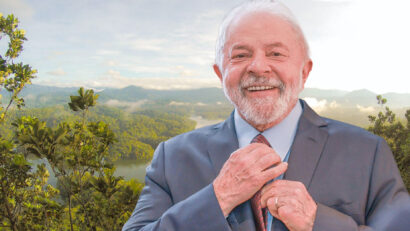
The deforestation of the Amazon rainforest has been in action for years, risking the collapse of the unique ecosystem. But the election of Lula da Silva as president in early 2023 brought hope. He announced that he would put an end to the deforestation of the Amazon. He seems to be keeping his promise as, compared to November 2022, deforestation in the Amazon fell by 64% in November 2023.
The Amazon rainforest is one of the largest carbon reservoirs on earth. This makes it particularly important in the fight against climate change. Despite this, illegal deforestation persists. This was especially evident under the right-wing nationalist ex-president Jair Bolsonaro. During his time in office, rainforest deforestation increased by around 75%.
The current president, Lula da Silva, promised to stop deforestation when he took office – and it looks like Silva is keeping his promise. Compared to the previous year, deforestation fell by 64% in November 2023. According to the Brazilian Space Agency (INPE), around 200 square kilometres were destroyed. This is the smallest area since the evaluations began. It is also the first time since 2018 that less than 10,000 square kilometres have been deforested in one year.
“Brazil is ready to resume its role in the fight against the climate crisis and protect all ecosystems, especially the Amazon. Our government once managed to reduce forest destruction by 80 per cent. Now let’s all fight together for zero deforestation!”
FIRST SUCCESSES AFTER JUST 6 MONTHS: RAINFOREST DEFORESTATION DOWN BY 33.6 PER CENT
After six months in office, the BBC report initial successes in the fight against deforestation. Compared to the first half of the previous year, deforestation has been reduced by 33.6%. In June 2023, 41% less forest was destroyed than in the previous year. Brazilian Environment Minister Marina Silva attributes this to Lula’s successful environmental policy.
LULA’S POTENTIAL TO REDUCE DEFORESTATION BY 89%
Lula’s goal of ending deforestation by 2030 is a major challenge. This is because deforestation reached alarming proportions under his predecessor Jair Bolsonaro. The new conservation plan published by President Lula at the beginning of June 2023 aims to achieve this goal. Among other things, it provides for the confiscation of half of all illegally used land within protected areas, as well as higher penalties for illegal deforestation.
The Brazilian president also calls on other countries – especially the rich West – to contribute financially to saving the “green lungs of the Earth” in order to combat the global climate crisis.
A study attests that Lula’s plans have the potential to actually reduce deforestation in the Amazon by 89%. In any case, Lula will not have an easy time of it. The left-wing president still faces a conservative majority in parliament.
UNDER BOLSONARO, THE AMAZON SHRANK BY MORE THAN TWICE THE AREA OF VIENNA – PER MONTH
This is sorely needed, as the Amazon has been badly affected in recent years. When Lula first moved into the presidential palace in 2003, he launched an ambitious programme to save the rainforest. He and his successor Dilma Rousseff, who like Lula comes from Brazil’s left-wing Workers’ Party, succeeded in reducing deforestation by 80% to a historic low. But when Bolsonaro came to power in 2019, Brazil made a U-turn in its environmental policy.
Bolsonaro willingly granted concessions to allow corporations to clear the rainforest for soya and palm oil cultivation, cattle breeding and mining. Illegally cleared areas were legalised by Bolsonaro and forest fires were only half-heartedly combated. Deforestation increased sharply by 70 per cent under his government.
FOR THE FIRST TIME, THE AMAZON EMITS MORE CO₂ THAN IT CAN CAPTURE
Under Bolsonaro, the Amazon’s carbon footprint has turned around. For the first time, it is emitting more CO2 than it can bind. This was revealed in a study by researchers from the French National Institute for Agronomic Research. The scientists mainly analysed satellite data documenting the plant biomass in the rainforest and its deforestation. The result: the Amazon basin released around 16.6 billion tonnes of CO₂ into the environment, but only absorbed around 13.9 tonnes. This 2.7 billion tonne difference is roughly Austria’s consumption for 35 years.
[embedded content]
WITHOUT A WELL-PRESERVED AMAZON RAINFOREST, THE ENTIRE ECOSYSTEM COULD COLLAPSE
The Amazon currently has a perfectly functioning water cycle. Inland regions actually have too little rainfall for a tropical rainforest. But the trees suck the groundwater upwards, it evaporates and rains down again over the huge forest area. This cycle could be permanently disrupted by further deforestation. The rainforest would slowly die off, turn into a savannah and change the climate around the world.
This process would release as much CO2 as the entire world consumes in seven years. The unique ecosystem, which is home to 10% of all species, would be irretrievably lost and with it the CO2-binding effect of the rainforest. Scientists assume that this tipping point is reached at a deforestation rate of 20 to 25%. We are currently at 18%.
ANTI-DEFORESTATION RAIDS AFTER TAKING OFFICE
Just a few days after taking office, Lula’s government took action and carried out controls in the rainforest against illegal deforestation. As reported by Reuters, checks were carried out in areas that are all within the Cachoeira Seca indigenous reserve, where deforestation is strictly prohibited.
While deforestation is decreasing, the number of fires continues to rise, as satellite monitoring shows. Whether this is due to natural causes or arson cannot be determined.
[embedded content]
This work is licensed under the Creative Common License. It can be republished for free, either translated or in the original language. In both cases, please cite Kontrast / Marco Pühringer as the original source/author and set a link to this article on Scoop.me. https://thebetter.news/amazon-deforestation-reduced/
The rights to the content remain with the original publisher. Läs mer…
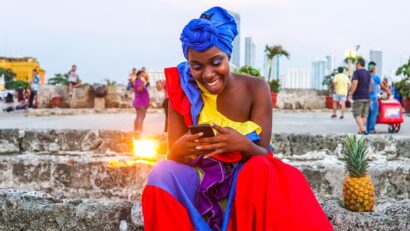
Latin America is emerging as the place to look for alternatives to the neoliberal economic system. In Colombia, the Gustavo Petro led government has spent the last year restructuring the previously isolated sector of small businesses and cooperatives. Petro wants to shift away from this model, and into a solidarity-based system.
The German-language Latin America news portal amerika21 reports that the establishment of a solidarity sector is intended to promote small domestic companies in Colombia. These companies include coffee producers, food vendors, artists and small businesses in the construction sector. The Colombian government has already initiated solidarity-based associations of micro-businesses in eleven regions, with a total of 33 of these projects planned. At a year-end meeting in Ibagué, 3,200 organisations celebrated the development of the solidarity economy in the country.
NEW ECONOMIC APPROACH: COOPERATION INSTEAD OF COMPETITION
The co-operatives, small businesses and small-scale farmers in the eleven regions have joined together to form so-called circuits. This means that, based on the interactions between their products and services, the businesses have also formed cross-sector networks. For example, the “Circuit for Industry, Trade and Tourism” has been created in the northern department of La Guajira and the “Circuit for Tourism and Renewable Energies” in the desert region of Tatacoa.
In the “Solidarity Network of Coffee” (Cafesol) in the department of Huila, small coffee farmers can now join forces instead of competing against each other.
PETRO WANTS TO FAVOUR COOPERATIVES FOR CONTRACTS
Last year, the government department for solidarity organisation in Colombia launched a project to create a solidarity sector. Initially, the department organised local meetings on the topic of the solidarity economy, where small-scale farmers, cooperatives and micro-enterprises could get to know each other and exchange ideas. Entrepreneurs were then trained to take on leadership positions in an educational programme. This enabled existing cooperatives to be strengthened and new cycles to be established.
President Gustavo Petro emphasises the strategic importance of the solidarity sector for the economy in Colombia:
“We want associations of small shopkeepers alongside the financial cooperatives. We want associations of small potato farmers who join forces to obtain subsidised loans so that they can begin the light industrialisation of their products.”
In addition, 30% of state contracts will no longer be carried out by large companies in future. Rather, they will be taken by joint co-operatives. This applies to projects such as road construction. The mergers of small companies therefore make it possible to complete larger contracts, which in turn generates more profit for the sector.
SOLIDARITY-BASED ECONOMY INSTEAD OF NEOLIBERALISM
The Colombian government under the presidency of Gustavo Petro shows that there are alternatives to the neoliberal model. Instead of emphasising competition, the economy is to be geared more towards a principle of solidarity by promoting the cooperative sector. The project suggests that it is possible to strengthen the local economy with the help of small businesses and cooperatives. With the development of a solidarity-based sector, small businesses can be maintained and further developed collectively.
This work is licensed under the Creative Common License. It can be republished for free, either translated or in the original language. In both cases, please cite Kontrast.at / Anna Drujan as the original source/author and set a link to this article on Scoop.me. https://thebetter.news/colombia-promotes-economic-cooperation/
The rights to the content remain with the original publisher. Läs mer…
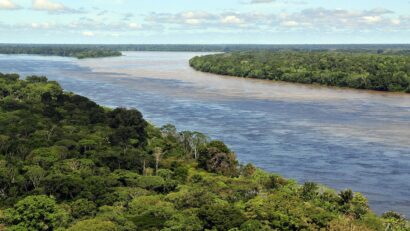
For years, the Amazon rainforest was cut down. The concern: the unique ecosystem could collapse. The deforestation in Brazil is a huge environmental problem. But the election of Lula da Silva as president gave hope. He announced that he would end the deforestation of the Amazon. In fact, the first steps followed a few days after taking office. The encouraging result: in comparison to the previous year, deforestation was reduced by more than a third.
“Brazil is ready to resume its role i the fight against the climate crisis and protect all ecosystems, especially the Amazon. Our government once managed to reduce forest destruction by 80%. Now lets all fight together for zero deforestation!” says Lula da Silva, President of Brazil.
The BBC reports first successes in the fight against rainforest deforestation. Compared to the first half of the previous year, deforestation was reduced by 33.6%. In June 2023, as much as 41% less forest was destroyed than the previous year. Brazilian Environment Minister Marina Silva attributes this to Lula’s successful environmental policy.
Lulas potential to reduce deforestation by 89 percent
Lula’s goal of ending deforestation by 2030 is a major challenge. Under his predecessor, Jair Bolsonaro, deforestation took on alarming dimensions. The new conservation plan, which President Lula published at the beginning of June 2023, aims to achieve this goal. Among other things, it provides for the confiscation of half of all illegally used land within protected areas, as well as higher penalties for illegal logging.
Furthermore, the Brazilian president calls on other countries, especially the rich West, to contribute financially to saving the “green lungs of the earth” in order to combat the climate crisis globally.
A study confirms that Lula’s plans actually have the potential to reduce deforestation in the Amazon by 89 percent. In any case, Lula will not have it easy: The left-wing president still faces a conservative majority in parliament.
[embedded content]
Under Bolsonaro, the Amazon shrank by more than twice the area of Vienna – per month
This is sorely needed, because the Amazon has been badly affected in recent years. When Lula first moved into the presidential palace in 2003, he launched an ambitious program to save the rainforest. He and his successor Dilma Rousseff, who like Lula comes from Brazil’s leftist Workers’ Party, succeeded in reducing deforestation by 80 percent to a historic low. But when Bolsonaro came to power in 2019, Brazil did an about-face on environmental policy.
Bolsonaro readily awarded concessions to allow corporations to clear rainforest for soy and palm oil farming, as well as cattle ranching and mining. Illegally cleared areas were legalized by Bolsonaro, and forest fires were fought only half-heartedly. Clearing jumped by 70 percent under his government.
For the first time, the Amazon emits more CO2 than it can absorb
Under Bolsonaro, the Amazon’s climate balance had turned around: For the first time, it emits more CO2 than it can absorb. This was shown in a study by researchers from the French National Institute for Agronomic Research. The scientists mainly analysed satellite data documenting the plant biomass in the rainforest and its deforestation. The result: the Amazon basin released about 16.6 billion tons of CO2 into the environment, but only absorbed about 13.9 tons. This 2.7 billion ton difference is roughly Austria’s consumption for 35 years.
Without well-maintained Amazon rainforest, the whole ecosystem could topple over
Currently, the Amazon has a perfectly functioning water cycle: regions inland actually have too little rainfall for a tropical rainforest. But the trees suck the groundwater upwards, it evaporates and rains down again over the huge forest area. This cycle could be permanently disrupted by further deforestation. The rainforest would slowly die, turning into savannah and changing the climate around the world.
This process would release as much CO2 as the entire world consumes in seven years. The unique ecosystem that is home to 10 percent of all species would be irretrievably lost, and with it the CO2-binding effect of the rainforest. Scientists assume that this tipping point is reached at a deforestation rate of 20 to 25 percent. Currently, we are at 18 percent.
[embedded content]
Deforestation in Brazil: Raids after taking office
Within days of taking office, Lula’s government took action, conducting checks in the rainforest against illegal logging. As reuters reports, controls were carried out in areas all within the Cachoeira Seca indigenous reserve, where deforestation is strictly prohibited.
While deforestation is decreasing, the number of fires continues to increase, satellite monitoring shows. Whether due to natural causes or arson cannot be determined.
This work is licensed under the Creative Common License. In case of new republication, please cite Kontrast.at /Marco Pühringer as the Source/Author and set a link to the article in English: https://scoop.me/deforestation-brazil/
The rights to the content remain with the original publisher. Läs mer…
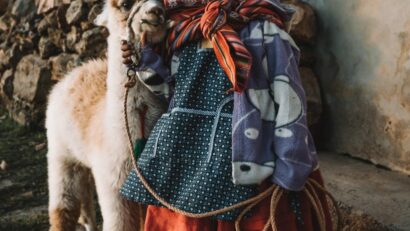
Bolivia, a country in the Andes, has developed strongly in recent years. Since the left-wing president Evo Morales took office, poverty in the country has been more than halved, life expectancy has risen by four years and the economy is booming. Bolivia has achieved this through the nationalisation of its mineral resources and an economic policy that takes care of the poorest in the country.
Bolivia was long considered the poorhouse of Latin America. Although the country is rich in raw materials, most of the profits from their extraction went to large corporations from Europe and North America. This changed when the indigenous trade unionist Evo Morales was elected president in 2006. He nationalised the country’s raw materials and introduced far-reaching social programmes to help the impoverished population. As a result, during his time in office, Morales was able to more than halve poverty in Bolivia and the economy grew faster than in almost all other Latin American countries.
From poverty to the presidency
Evo Morales grew up in extreme poverty in the highlands of Bolivia in the 1960s. Four of his brothers died at a young age. He attended school for only six years before helping to feed the family by selling sweets and working in a bakery. As a young adult, he became active in the local coca farmers’ union and took on more and more responsibilities.
The country’s government was controlled by the white upper class, although the population was largely indigenous. The country’s political situation had been marked by wars and coups d’état since independence in 1821. The economy barely moved. Much of the population, especially indigenous peasants in the highlands, lived in abject poverty and had little say in the country’s politics. In addition, the country’s mineral resources were controlled by international corporations. The poor population had hardly anything from the country’s wealth of resources.
The population hardly benefits from the mineral resources of their country. (Foto von Alex Azabache / Unsplash)
Morales wanted to change that. Together with other trade unionists and activists from the indigenous population, he created the Movimento al Socialismo (MAS) party. Their goal was to nationalise the mineral resources, strengthen the rights of the indigenous population and expand the welfare state. Despite opposition from the country’s political elites, Morales was elected the country’s first indigenous president in 2005 with an absolute majority. Under his presidency, which lasted until 2019, the country changed fundamentally.
Nationalisation of mineral resources
One of the first major steps taken by the Morales government was the nationalisation of Bolivia’s oil and gas resources. By law in 2006, the large international corporations that had controlled these mineral resources until then were required to sign new agreements with the state oil and gas company Yacimientos Petroliferos Fiscales Bolivianos (YPFB). In some cases, YPFB took over the extraction of the raw materials completely, in some cases only shares in them. The Morales government took a similar approach when it nationalised the mining industry in 2007. The following year, the Bolivian government also nationalised the largest company in the telecommunications sector.
Through these nationalisations, the government now not only had more control over its own resources, but could also use the profits from their extraction for social and infrastructure projects.
Evo Morales was elected Bolivia’s first indigenous president in 2005. (Foto: Cancillería Ecuador / CC BY-SA 2.0)
The fight against poverty
When the Morales government took office, Bolivia was the poorest state in South America. Morales experienced the bitter poverty of the population himself. His goal and that of the MAS movement was to end this poverty. This was achieved mainly in three ways: strengthening the economy, raising wages and expanding the welfare state.
With the income from the extraction of raw materials, the government modernised the country’s infrastructure. Between 2000 and 2015, public investment doubled. Roads, hospitals, and schools were built. An important focus, however, was the development of rural areas. Through land reform, small farmers gained access to land that was previously in the hands of large landowners. In addition, the government supported food prices to help small farmers and ensure the country’s food security. At the same time, oil and gas refineries were built not only to export raw materials, but to keep value added in the country.
With a stronger economy, higher wages could be paid. A particular focus was on the incomes of the poorest in the country. That is why Bolivia’s minimum wage was quadrupled during Morales’ term in office (2006 to 2019). More money in their pockets meant that Bolivians could now consume more. This further boosted the economy.
Numerous social programmes were created to reduce poverty even further. The universal basic pension Renta Dignidad is particularly central. Many thousands of older Bolivians received a pension for the first time. In addition, poverty-stricken families were supported if they kept their children in school instead of sending them to work. Free meals were also introduced to further increase attendance at school.
Poverty in Bolivia more than halved
Poverty in Bolivia has been more than halved from 47.20 to 15.60 during Morales’ term in office. Life expectancy has also risen from 64 to 68 years during this period. With an average economic growth of 4.7 percent, Bolivia’s economy has grown faster than in almost any other country in Latin America. At the same time, the government has been able to significantly reduce social inequality in the country.
MAS’s reforms mainly help the poorest in the country. (Foto: Lesly Derksen / Unsplash)
More rights for indigenous people
In addition to the social and economic improvements for the broad population of Bolivia, the MAS government was also able to strengthen the political rights of indigenous groups. A new constitution was adopted, making Bolivia a plurinational state. In the course of this, a total of 36 indigenous languages were recognised as official languages. In addition, the indigenous flag Wiphala has since been used on an equal footing with the national flag.
Since the electoral success of MAS, more indigenous people have been elected to the national and regional parliaments or have held ministerial posts. Joshua, a taxi driver in La Paz, explained the political change as follows:
“We used to be governed by the upper class, now our own people govern us. We now live with dignity.”
Morales’ flight from Bolivia and exile
Despite the MAS government’s successes, it has also been heavily criticised. Morales was accused of being too distant from the needs of the indigenous population. In addition, his government was repeatedly accused of a lack of environmental protection. Bolivia’s rainforests are falling victim to slash-and-burn agriculture. The dependence of the Bolivian economy on fossil fuels and raw materials is also repeatedly criticised.
However, Evo Morales received the most criticism for not wanting to leave the presidency. After his first electoral victory, he was elected president in 2009 and again in 2014 with a large majority. In 2018, the Supreme Court overturned a constitutional article that prevented him from running again. When Morales ran for president again the following year, he drew heavy criticism at home and abroad. Irregularities occurred during the election and although Morales clearly won the election, the opposition rejected the result. Riots broke out in many parts of the country. The police and military leadership sided with the opposition. When the military chief asked Morales to resign, he complied and fled Bolivia.
The right-wing opposition then took power and tried to reverse many of the MAS government’s reforms. The welfare state was to be cut back, large corporations were to control the extraction of natural resources again and, above all, the rights and influence of the indigenous population were to be pushed back. The opposition was mainly based on evangelical Christians and the country’s economic elites.
New president continues reform policy
Although it soon became clear that there was no electoral fraud in the 2019 election, the new government repeatedly delayed new elections. Elections were first held in October 2020. These were clearly won by the MAS candidate and former Minister of Economy in the Morales government, Luis Acre. Evo Morales then returned to Bolivia.
[embedded content]
Luis Acre is considered the architect behind Morales’ economic policy and is continuing his reforms. For example, Bolivia managed to keep inflation at the lowest level in Latin America through subsidies for food and energy.
This work is licensed under the Creative Common License. It can be republished for free, either translated or in the original language. In both cases, please cite / Thomas Hackl as the original source/author and set a link to this article on Scoop.me. https://scoop.me/bolivia-poverty-nationalisation-mineral-resources/
The rights to the content remain with the original publisher. Läs mer…
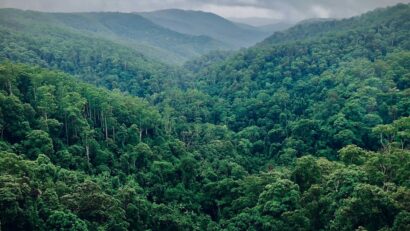
Costa Rica went its own way: without an army, but with investments in education and health, a sustainable economy and an open society, Costa Rica became a model state in Latin America.
Costa Rica is one of the most prosperous, peaceful and sustainable countries in Latin America. Although the Central American country is located in one of the most insecure and unstable regions of the world, the small country has managed to protect its peace and democracy. At the same time, the Ticos (the common name for people from Costa Rica) have made it prosperous. The country has become one of the most popular tourist destinations in the world. All this despite the fact that before independence, Costa Rica was one of the most insignificant and underdeveloped parts of the Spanish colonial empire.
But how did the small Central American country manage to develop so much? And what can other countries learn from Costa Rica? Here are three of the most important points.
Schoolbooks instead of Firearms
Costa Rica won its independence without violence in 1821. However, the country was not spared conflicts thereafter. Repeated wars and civil wars broke out. For example, the American William Walker tried to conquer all of Central America and establish a slave state there under the influence of the USA. Under the leadership of Costa Rica, however, the states of Central America were able to defeat William Walker.
The turnaround came with Costa Rica’s last civil war in 1948. At the end of the war, the army was abolished and since then Costa Rica has lived in unarmed neutrality. This makes Costa Rica one of the few countries in the world without an army.
[embedded content]
Instead of spending money on weapons, Costa Rica invested in education and the health system. The result is impressive: Today, the Ticos have the highest life expectancy in Latin America and even do better than the USA. In education, Costa Rica has one of the highest literacy rates and one of the highest percentages of university graduates in Latin America. This has led to a strong civil society and a successful economy.
Costa Rica has not only promoted peace in its own country, but has also worked for the peaceful resolution of conflicts throughout the region. The country successfully acted as a mediator in the civil wars in Nicaragua, Guatemala, Honduras, and El Salvador. For this commitment, the then Costa Rican President Oscar Arias Sánchez was awarded the Nobel Peace Prize.
Costa Rica is a Role Model in Environmental Protection
Costa Rica is one of the most sustainable countries in the world and a model of nature conservation. The country obtains almost 100 percent of its electricity from renewable energy and is a global pioneer together with countries such as Iceland and Norway. In 2017, the country went a full 300 days without fossil energy in its electricity generation. Costa Rica is so successful with its sustainable energy that it can even export electricity to neighbouring countries.
The country also has one of the largest biodiversities in the world. More than 5 percent of all known animal and plant species are native to Costa Rica, and this despite the fact that tiny Costa Rica makes up only 0.03 percent of the land area of our planet. By comparison, Austria is home to only about 0.53 percent of the world’s biodiversity, even though the country is almost twice the size of the Central American nation.
This is not by chance. Costa Rica has made great efforts to protect its nature. Until the 1980s, the country was affected by heavy deforestation and only about 30 percent of the land was covered by forest. Costa Rica then launched a massive campaign to reforest the country. Today, almost 60 percent of the country’s territory is covered with forest again.
Hardly any other country in the world has been as successful in reforesting its forests as Costa Rica. (Foto: Waren Brasse / Unsplash)
To protect nature in the long term, Costa Rica has created numerous protected areas, including 26 national parks. The national parks alone account for over 12 percent of the country’s surface area. To put that in perspective: Austria has six national parks, which together make up less than 3 percent of the national territory.
This is not only good for animals and plants, but also for people. Besides being green lungs, the national parks are also tourist magnets. Around 2.5 million tourists from abroad visit Costa Rica’s national parks every year. This makes the country a pioneer in sustainable tourism.
Openness and Integration
Costa Rica is very open and welcoming to people from other countries. That is why the number of people living in Costa Rica but born in other countries has increased a lot in the last decades. People come from different countries and for different reasons. Costa Rica has a long tradition of welcoming refugees. Especially when many countries in Central America were affected by civil wars, Costa Rica took in refugees. In recent decades, however, there has also been an increased migration of workers from Nicaragua to Costa Rica to fill labour shortages in tourism and agriculture. Equally, many people from North America and Europe come to live in Costa Rica because of the natural beauty and pleasant climate.
Costa Rica is comparatively successful in integrating these different groups into society. Besides the openness of the population, this is mainly due to two reasons: the legal regulations in this area and the national understanding of the Ticos.
The biggest legal difference between Costa Rica and many European countries is that all people born in Costa Rica are automatically entitled to Costa Rican citizenship. Children of Ticos born abroad are of course also entitled to citizenship. In addition, it is easier for people with foreign passports to obtain Costa Rican citizenship than in Austria, for example. In Costa Rica you only have to live in the country for five years, in Austria for ten.
Costa Rica’s national identity also makes it much easier for people from abroad to integrate. Being Ticos has to do with language and values. Anyone who speaks Spanish and uses typical Costa Rican expressions (such as tuanis for “cool”, mae for “Oida” or pura vida for everything from “thank you”, “please” to “all is well”) is quickly seen as a Tico. Values that are highly rated in Costa Rican society are pacifism, environmental protection, but especially cosiness and conviviality. The focus of the national understanding on language and values rather than skin colour or origin of the parents makes it simple to integrate into Costa Rican society.
Ticos love nature, tranquillity and cosiness. So it is not surprising that they have made the sloth one of their national symbols. (Foto: Adrián Valverde / Unsplash)
Role model but not without flaws
This is not to say that Costa Rica is a paradise that is flawless. The country has many problems to overcome. Although corruption in Costa Rica is low compared to other Latin American countries, it still leads to large infrastructure projects often not being realised, being delayed or costs exploding. However, it is precisely these projects that would be necessary for the continued fight against climate change. For example, the expansion of public transport in Costa Rica is lagging behind. Therefore, most people still depend on the car, even in urban areas. In addition, social inequality and crime have grown in recent years. The public health and education systems are also under increasing financial pressure.
Nevertheless, the example of Costa Rica shows that a country with peaceful, social and sustainable development can be successful and countries like Austria can also learn a lot from this example.
This work is licensed under the Creative Common License. It can be republished for free, either translated or in the original language. In both cases, please cite / Thomas Hackl as the original source/author and set a link to this article on Scoop.me. https://scoop.me/costa-rica-model-state/
The rights to the content remain with the original publisher. Läs mer…
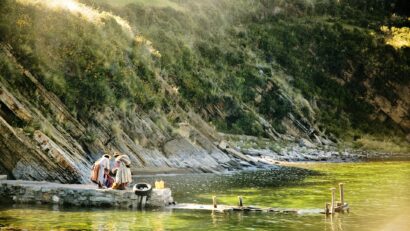
In Bolivia, 24,000 farmers in cooperation with communities and public water suppliers protect more than 600,000 hectares of forest from deforestation, exploitation, and the interests of mining companies—and thus protect the regional water supply in the long term. The Reciprocal Water Agreements (ARAs) are now considered a model for conservation in South America: more and more ARAs are being signed in Peru, Colombia, Ecuador, and Mexico. How do this agreement work?
Fourteen years ago, María Gutiérrez bought a piece of land in Alto Espejo, Santa Cruz, Bolivia. She now lives right next to the forest. There are a few fruit trees in her garden and a small river runs through it. The river provides her and her animals with drinking water. She sells the lemons, oranges, and tangerines. María lives from this.
For a few years now, she has been making her own honey. Since then, María’s life has become easier, earning an extra 5,000 to 6,000 Bolivianos (about $800) a year. She got the bees, the boxes, and the harvesting equipment from Natura Foundation. An NGO that promotes biodiversity and sustainable water management. In return, María signed the Reciprocal Water Agreement (ARA).
María is one of 24,000 farmers who have signed such an agreement. Together they protect 600,00 hectares of forest from deforestation, pollution, and the interests of large mining companies.
[embedded content]
What is a Recipocal Water Agreement (ARA)?
The “Recipocal Watter Agreement” (Acuerdo Recíproco por Agua) is a contract between the people in the countryside, the people in the city and the public water suppliers. In short, a contract between all the people who live in the same watershed or share the same water source. Basically, it’s a cooperative effort to protect the natural water cycle for the long term. Everyone works together and benefits.
The idea behind it is simple:
Farmers and rural people protect their forest and receive incentives for doing so: e.g., access to running water or help in growing fruits.
The incentives are paid for by the communities and the end users through a small fee, in exchange for sustainable and clean drinking water in the long term.
Water suppliers expand their network and provide flowing water to the farmers.
Definition: What are Reciprocal Watershed Agreements?
“Reciprocal Watershed Agreements—known as ‘Watershared’ in South America—are simple grassroots versions of conditional transfers that help land managers located in upper watershed areas to sustainably manage their forest and water resources in ways that benefit both themselves and downstream water users.” (Nigel Asquith)
Natura Foundation takes care of the contracts and contributes to the financing of the individual projects at the beginning. The contribution is around 20 percent, so that the projects remain affordable for everyone even after a certain period of time has elapsed.
Incentives: running water, a beehive, or a basin for fish farming
Access to running water is the biggest incentive, Teresa Vargas, executive director of Natura Foundation, told Mongabay. That’s because many of the farmers who live outside villages and towns are not yet connected to the piped water system.
Depending on what helps local people the most, however, the incentives can be quite different: a beehive, for example, or help with growing citrus fruits or raising fish.
The cost of the incentives is borne by the water suppliers, their customers, and the communities. The water suppliers, in turn, lay the pipes and bring the flowing water to the farmers. In the end, everyone benefits: nature is protected, the farmers get an additional income or flowing water and the people in the region have sustainable and clean water in the long term.
Municipalities, water suppliers and end-users:pay jointly for incentives
Municipalities pay about one percent from tax revenues and 0.5 percent from the budget they receive from the central government. End users contribute either one Boliviano per month ($0.15) or an agreed percentage. Everything is done simply and without bureaucracy, directly through the water bill. The important thing is that no one is forced. The contracts and cooperations are voluntary.
Depending on the contract, different amounts are collected and managed in a common fund. For 8,000 to 9,000 consumers, this would amount to about half a million Bolivianos (about $72,000). Natura Foundation also pays into the fund. With the standard contract term of 10 years, they only pay about 20 percent at the end. As a result, the project continues to function even after the contract expires and the NGO leaves. The fund can always be used to finance new incentives. And so, bit by bit, the area of protected forests grows.
[embedded content]
Protection for nature: 23 nature reserves in 20 municipalities—an area of 3.4 million hectares
The ARAs as water protection areas are a successful model. Politicians in Bolivia are now also interested in them—for two reasons:
The water suppliers in Bolivia are organized in cooperatives or in public companies. The government is therefore responsible for the water supply. What you get here is a concept that is already working in many communities and has more and more supporters.
Bolivia is one of the poorest countries in Latin America and suffers greatly from the consequences of the climate crisis. But climate change is abstract—lack of or polluted drinking water, on the other hand, is a reality. The issue affects everyone and brings people together.
Inspired by the success of these water protection areas, more and more local governments are protecting their forests. In the last 10 years, 23 protected areas have been created in 20 municipalities as a result. That’s 3.4 million hectares of forest by not disturbing the natural water cycle.
The model is now considered a model for conservation in South America, with more and more ARAs being completed in Peru, Colombia, Ecuador, and Mexico. Läs mer…
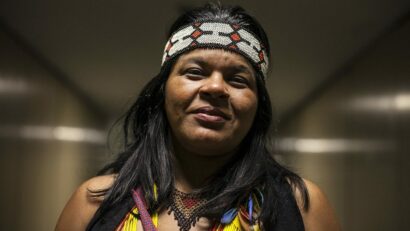
Brazil is getting a new Ministry for Indigenous Peoples, has more indigenous deputies than ever before, and is getting its first female indigenous minister with the appointment of Sônia Guajajara. Who is this woman, and what will change for the indigenous population now?
More than 256 different indigenous peoples live in Brazil. Yet their interests and concerns have received little attention. The history of the indigenous population in Brazil is partly a history of displacement, exploitation, and exclusion. Especially under the extreme right-wing ex-president Jair Bolsonaro, illegal land and raw material theft increased again. With his disastrous environmental policy, he destroyed not only the habitat, but also the livelihood of many indigenous peoples.
With the inauguration of the new left-wing president Lula da Silva, something seems to be changing: With five deputies, more indigenous politicians are joining Brazil’s National Congress than ever before.
In addition, a newly created ministry looks after the concerns and interests of the indigenous population. The Ministry for Indigenous Peoples is headed by activist Sônja Guajajara. This is another milestone in the country’s history: For she is Brazil’s first indigenous minister.
Sônia Guajajara: Brazil’s first female indigenous minister
The U.S. magazine TIME has named Sônia Guajajara one of the 100 most influential people of 2022. The 48-year-old is one of Brazil’s best-known activists. She fights for the rights of the indigenous population, for the preservation of their cultures and against environmental destruction and the theft of land and raw materials.
She appeared with Greta Thunberg and Javier Bardem at the 2019 UN Climate Change Conference, and was asked by Alicia Keys to take the stage at Rock in Rio (2017) to reiterate her demands to protect the Amazon.
[embedded content]
Sônia Bone de Souza Silva Santos, who bears the name of her people Guajajara, was born in 1979 in Arariboia, a reservation in the state of Maranhão. At the age of ten, she left her village to go to school. After attending secondary school, she graduated in literature and completed postgraduate studies in special education.
In March 2022, she was among 151 international feminists who signed the Feminist Resistance Against War: A Manifesto in response to Russia’s attack on Ukraine.
Demands of the indigenous peoples: An end to mining in their own territories, more participation, and easier territorial claims
Before she was sworn in as minister, she coordinated the campaigns of the Association of Brazilian Indigenous People (APIB). This association published a 10-point plan with demands to the new government when Da Silva took office.
Right at the beginning, the new Ministry of Indigenous Peoples has the chance to prove itself by responding to the demands of the Association of Indigenous Brazilians (APIB). The association is demanding the immediate repeal of seven normative legal acts of the previous government. Among them, for example, the decree that allows mining on the territories of indigenous peoples.
Sônia Guajajara campaigns for land rights and recognition for Brazil’s indigenous peoples. First as an activist, now as a minister (photo: Midia Ninja/CC by SA-2.0)
One of the most important demands is the repeal of the “Marco Temporal” decree. According to this decree, indigenous peoples may only claim an area if they can prove that they lived there before the Brazilian constitution came into force in 1988. But such proof is de facto impossible. This is because if the indigenous peoples had already been evicted, they would have to prove that they had already submitted a claim to reoccupy the land at that time.
Until 1988, however, the indigenous population was under the guardianship of FUNAI. Thus, they had no legal means of appealing to the judiciary through their own representation. FUNAI (Fundação Nacional do Índio) ensures that the rights of indigenous populations. Since 2019, it has been under the authority of the Ministry of Women, Family and Human Rights.
In the past 2022 elections, Guajajara was elected to the National Congress in the state of São Paulo. She is now one of five indigenous deputies in Congress.
In early January, President Lula da Silva made her minister for the new Ministry of Indigenous Peoples. She is one of 37 ministers in the new government—only 11 of whom are women.
Bolsonaro prevented land restitution—Lula wants turnaround
The far-right ex-president Jair Bolsonaro blocked and delayed with the Marco Temporal any attempts by the indigenous population to protect or reclaim their rightful habitat. The government of Lula da Silva declares the inhumane policies of its predecessor to be over and wants to stand up for the rights of all Brazilians again in the future. This includes the indigenous peoples.
More than 1,000 territories are currently being reclaimed by indigenous peoples. 731 applications are currently being processed.
Never before have so many indigenous deputies entered the National Congress
Mario Juruna was the first indigenous deputy at the national level in 1983. It took another 35 years for Joênia Wapichana to become the first indigenous woman elected to Congress.
With the latest election, five deputies now enter the National Congress as representatives of the indigenous peoples. Among them are Sônia Guajajara and the human rights activist Célia Xakriabá. These are only a few, and yet they are more numerous than ever before. Läs mer…